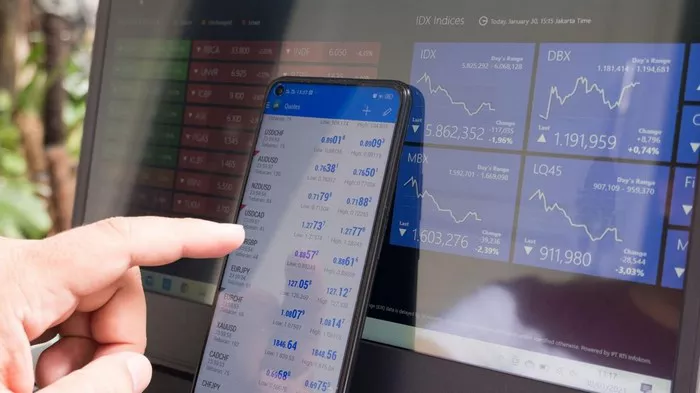Grain futures, a subset of the vast commodities market, offer investors unique opportunities to profit from the world’s agricultural production. These financial derivatives represent contracts for the future delivery of grains like wheat, corn, and soybeans at a predetermined price. Investing in grain futures can be a rewarding venture, but it requires a deep understanding of the market and its complexities.
Understanding Grain Futures
Before diving into the specifics of investing in grain futures, let’s establish a foundational understanding of what they are and how they work.
Grain futures are standardized contracts traded on organized exchanges, such as the Chicago Board of Trade (CBOT), where buyers and sellers agree to purchase or deliver a specified quantity of a grain commodity at a fixed price on a predetermined future date. These contracts serve two primary purposes: hedging and speculation. Hedgers, typically farmers and producers, use grain futures to protect themselves against price volatility, while speculators seek to profit from price movements.
Investors participating in grain futures do not typically take physical possession of the grains. Instead, they profit or incur losses based on the price fluctuations of these contracts. This financial market’s unique nature allows investors to engage without having to physically store or transport large quantities of grains.
Conduct Thorough Research
The foundation of successful grain futures investment is thorough research. Before you begin investing, it’s crucial to have a deep understanding of the specific grain commodities you’re interested in, the factors influencing their prices, and the dynamics of the grain futures market.
Study the Grains: Each grain commodity, such as wheat, corn, or soybeans, has distinct characteristics and factors influencing its price. Study the supply and demand dynamics, global production trends, and the impact of weather conditions on each grain type.
Learn Market Fundamentals: Understanding the fundamentals of the grain futures market is essential. This includes comprehending market mechanics, contract specifications, and the role of key market participants.
Analyze Historical Data: Review historical price data and charts to identify trends and patterns. This analysis can help you anticipate price movements and make informed investment decisions.
Select a Reputable Broker
To invest in grain futures, you’ll need to open an account with a reputable futures broker. The broker acts as an intermediary, facilitating your transactions in the futures market. It’s essential to choose a broker with a solid reputation, low transaction costs, a user-friendly trading platform, and excellent customer support. Look for brokers that specialize in commodities and provide research and educational resources to help you make informed decisions.
Risk Management
Grain futures investment can be highly volatile, with the potential for substantial gains and losses. Effective risk management is crucial to safeguard your capital. Here are key risk management strategies:
Diversify Your Portfolio: Avoid putting all your capital into a single grain commodity or contract. Diversification across multiple grain futures contracts can help mitigate the risk associated with any single commodity.
Set Stop-Loss Orders: Implement stop-loss orders to limit potential losses. These orders automatically sell your futures contracts if prices move against your position beyond a predetermined point.
Stay Informed: Keep a close eye on market news, weather reports, and supply and demand factors. Staying informed about factors that can affect grain prices is vital for making timely decisions.
Understand Leverage: Grain futures contracts are leveraged investments, meaning that you control a large position with a relatively small amount of capital. While leverage can amplify profits, it also increases the potential for losses. Use leverage cautiously and be aware of the risks.
Trading Strategies
Developing a trading strategy tailored to your investment goals and risk tolerance is essential for long-term success in grain futures investment. Here are some common strategies:
Trend Following: This strategy involves identifying and following prevailing price trends. Traders may enter long positions (buying) in a rising market or short positions (selling) in a declining market. Technical analysis tools, like moving averages and trendlines, can be helpful in trend-following strategies.
Range Trading: Range traders aim to profit from price fluctuations within a specified range. They typically buy near support levels and sell near resistance levels. Range trading strategies rely on technical analysis and can be effective in less volatile markets.
Fundamental Analysis: Fundamental analysis focuses on the supply and demand fundamentals of grain commodities. Traders using this approach examine factors such as crop reports, weather conditions, and global economic trends to make trading decisions.
Seasonal Strategies: Certain grains have seasonal price patterns based on planting and harvesting seasons. Seasonal traders aim to profit from these predictable price movements by entering and exiting the market at specific times of the year.
Regulations and Compliance
It’s important to be aware of the regulatory framework governing grain futures trading. The Commodity Futures Trading Commission (CFTC) in the United States oversees the futures markets. Ensure that your broker is registered with the CFTC and that you understand your rights and responsibilities as a futures trader. Compliance with regulatory requirements is critical to protecting your interests and ensuring a fair and transparent trading environment.
Conclusion
Investing in grain futures can be a lucrative endeavor, provided you approach it with the right knowledge, research, and strategies. The grain futures market is influenced by a variety of factors, including supply and demand dynamics, weather conditions, and global economic trends. Understanding these factors, selecting a reputable broker, and developing a sound trading strategy are essential steps in your journey towards success in grain futures investment.
Remember that, like all investments, grain futures carry risks, and it’s crucial to employ proper risk management techniques to protect your capital. Whether you’re a seasoned investor or a newcomer to commodities trading, the world of grain futures offers opportunities for profit and portfolio diversification when approached with diligence and informed decision-making.


